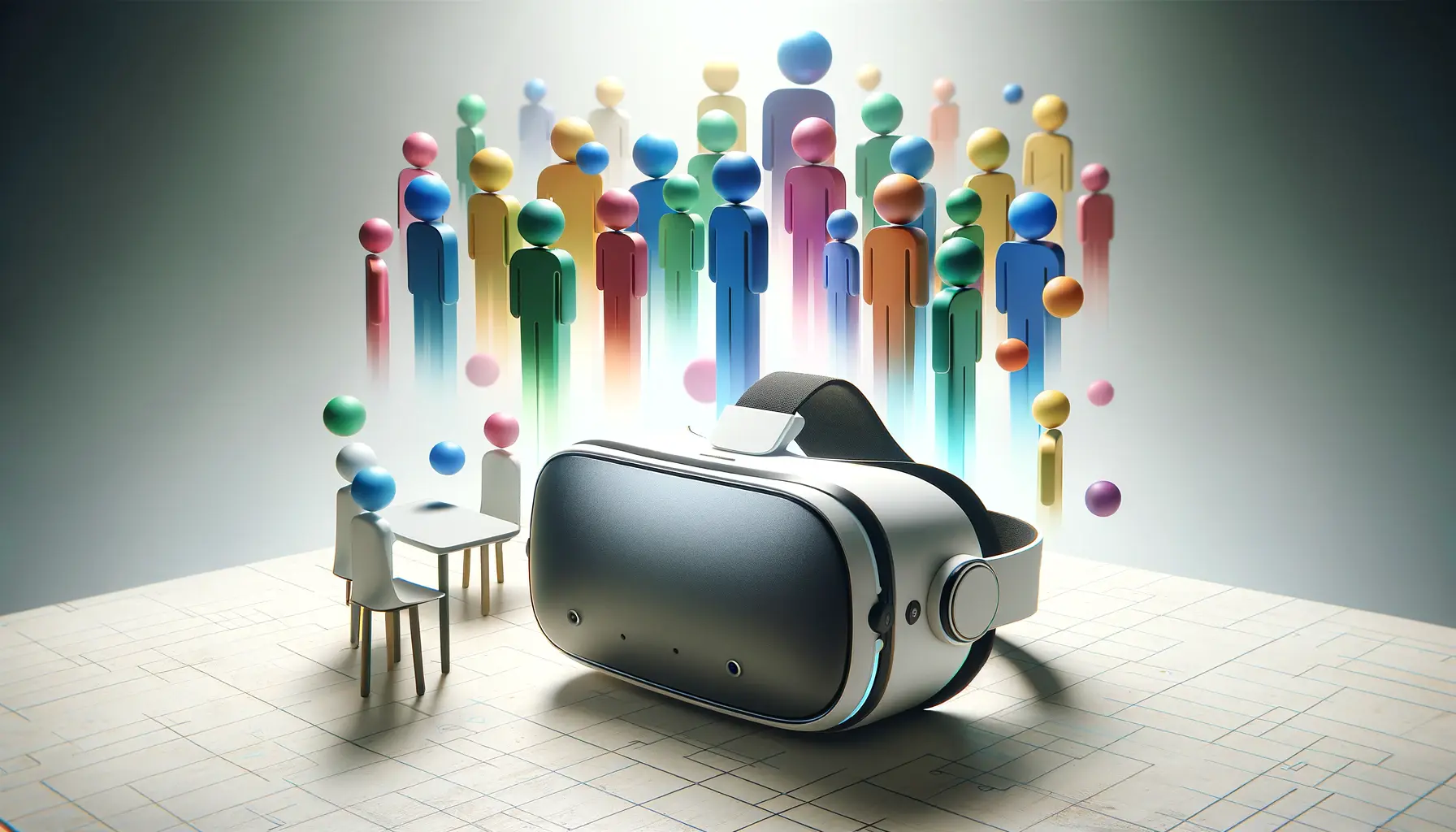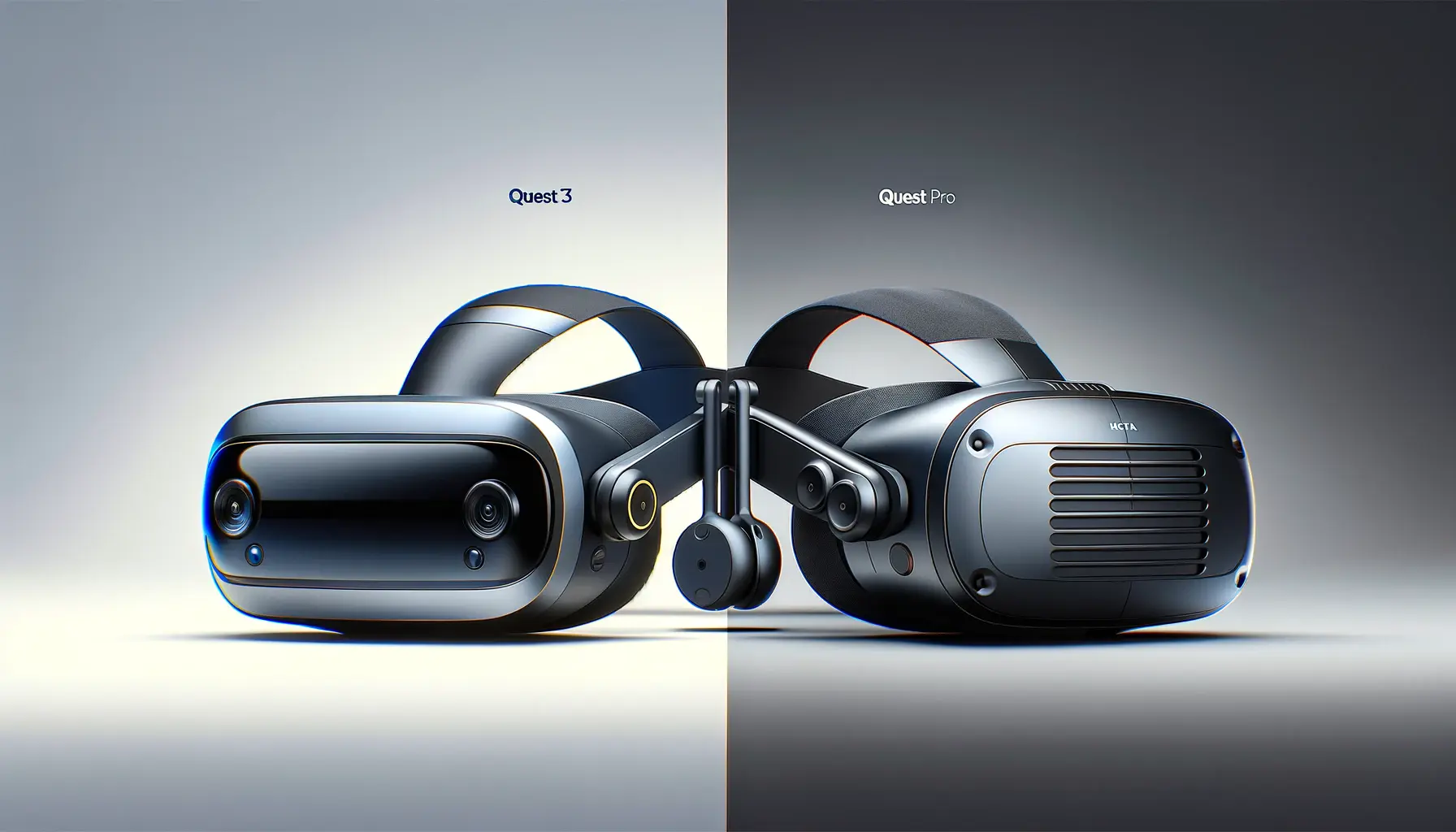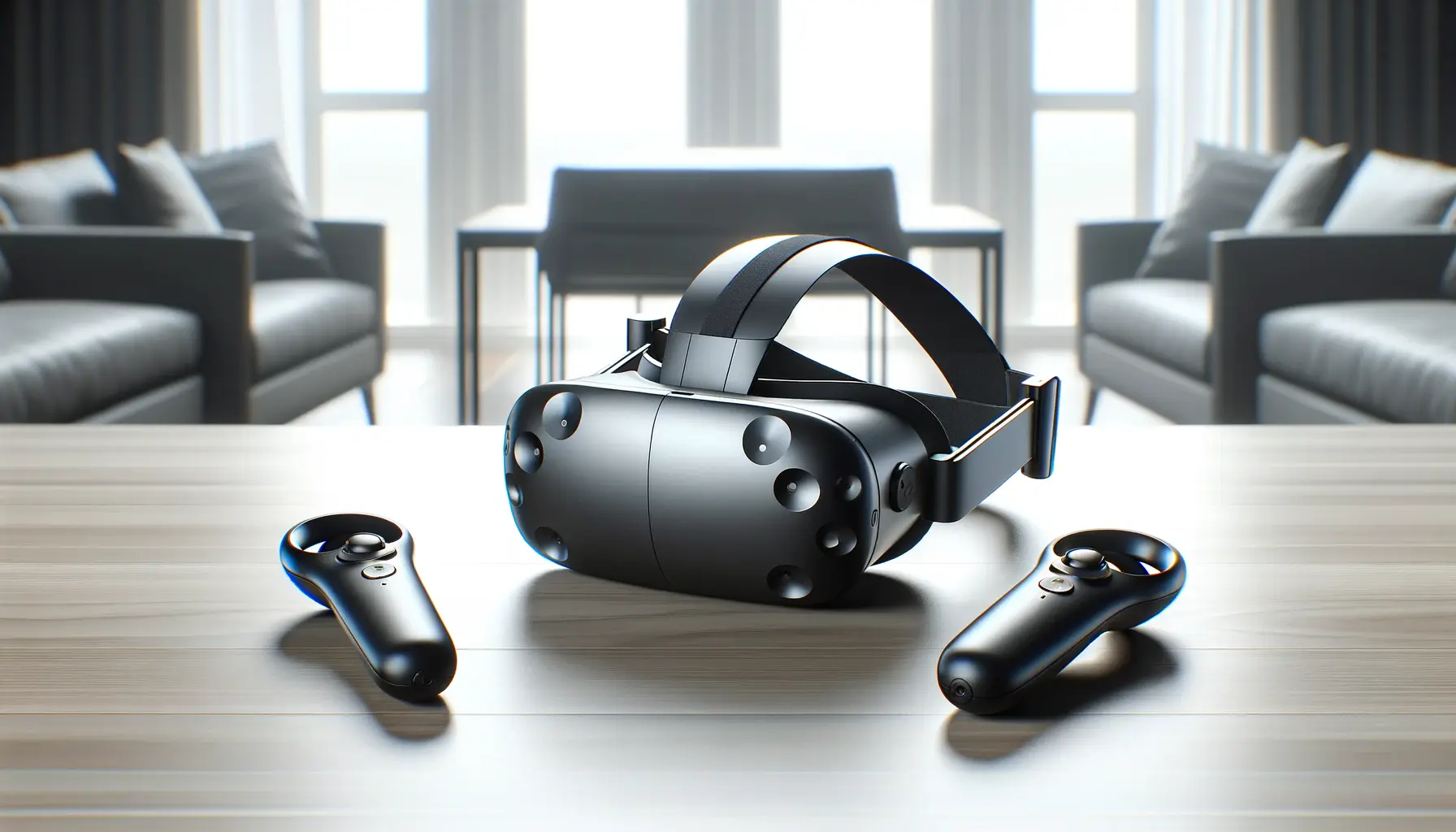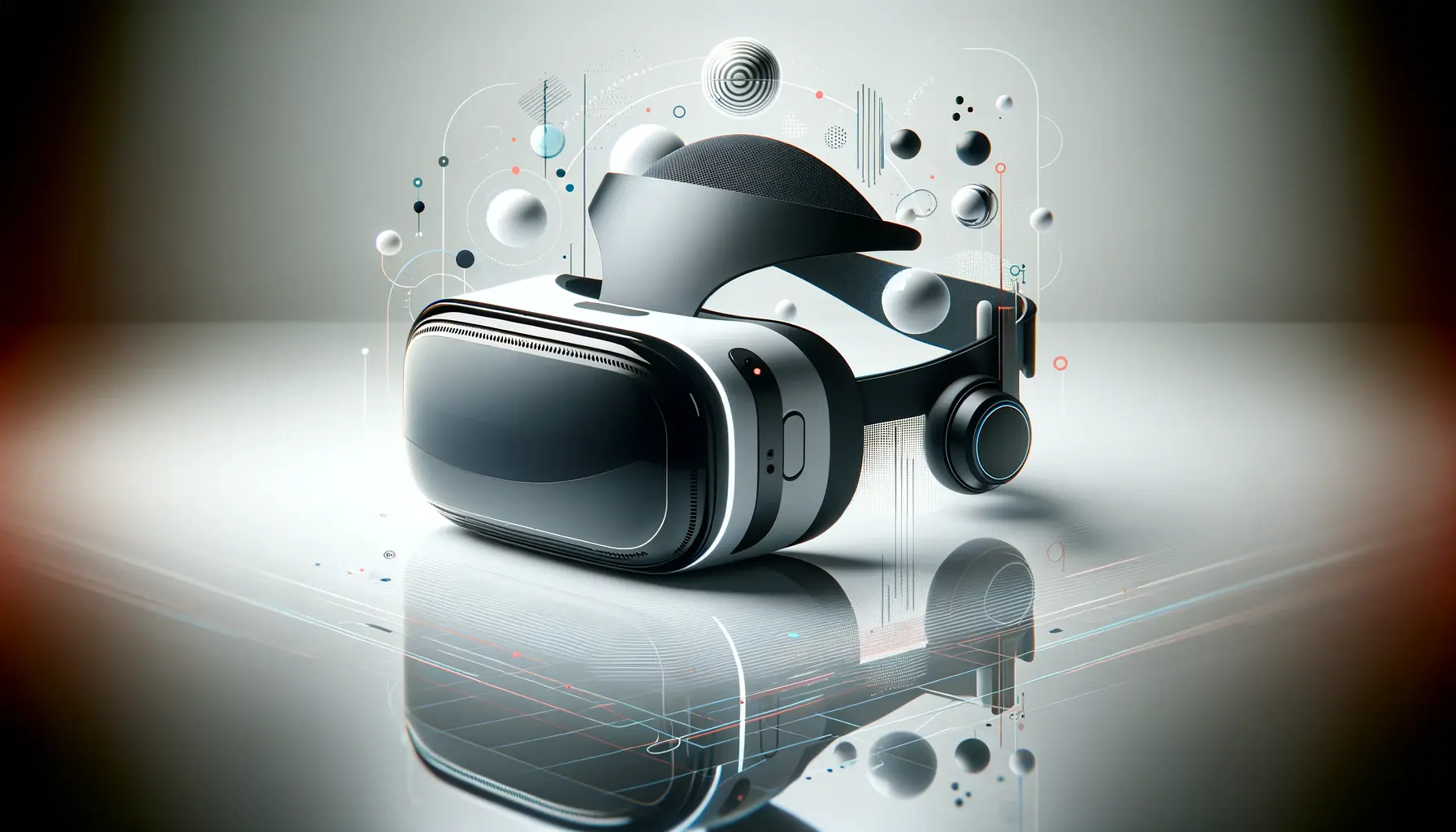The advent of the Meta Quest 3 has ushered in a new era of social virtual reality (VR) experiences, transforming the way we connect, play, and explore digital worlds.
This cutting-edge technology not only enhances the immersive experience of VR but also emphasizes the social aspect, making it a pivotal tool for interaction in the virtual realm.
The Meta Quest 3, with its advanced features and capabilities, is at the forefront of this revolution, offering users unparalleled opportunities to engage with others in a multitude of virtual environments.
At the heart of the Meta Quest 3’s appeal is its ability to bridge the gap between physical distance and social interaction.
In a world where digital connectivity is increasingly vital, the Quest 3 provides a platform for users to meet, interact, and share experiences with friends and strangers alike, all within the comfort of their own homes.
This article delves into the various aspects of social VR experiences available on the Meta Quest 3, exploring how they redefine the boundaries of virtual socialization and community building.
- Exploring the Social Landscape of Meta Quest 3
- Immersive Multiplayer Gaming on Meta Quest 3
- Virtual Events and Meetups on Meta Quest 3
- Enhancing Education and Training with Social VR
- Exploring Art and Culture in Virtual Reality
- Creating and Sharing in the VR World
- Navigating the Future of Social VR
- Embracing the Future with Meta Quest 3 Social VR Experiences
- FAQs on Meta Quest 3 Social VR Experiences
Exploring the Social Landscape of Meta Quest 3
The Evolution of Social VR Platforms
The Meta Quest 3 stands as a testament to the rapid evolution of social VR platforms.
From simple chat rooms to complex virtual worlds, the progression of these platforms has been remarkable.
The Quest 3 takes this evolution a step further by offering an array of social VR experiences that are as diverse as they are immersive.
Users can now attend virtual concerts, participate in multiplayer games, or simply hang out in virtual spaces that mimic real-world environments.
These advancements have not only expanded the scope of VR but have also made it more accessible and appealing to a broader audience.
One of the key features of the Meta Quest 3 is its integration with various social VR apps and platforms.
These applications are designed to foster a sense of community and connection among users, allowing for real-time interaction in a virtual space.
Whether it’s collaborating on a project, competing in a game, or attending a virtual event together, the possibilities for social interaction are virtually limitless.
This seamless blend of social connectivity and immersive VR experiences is what sets the Quest 3 apart in the digital landscape.
Building Virtual Communities
The ability to build and nurture virtual communities is another hallmark of the Meta Quest 3’s social VR experiences.
These communities are not bound by geographical limitations, enabling people from all over the world to come together based on shared interests, hobbies, or goals.
The Quest 3 provides the tools and platforms necessary for these communities to thrive, offering various ways for users to communicate, collaborate, and create together.
Virtual communities on the Quest 3 are characterized by their diversity and inclusivity.
Whether it’s a group of gamers teaming up for an epic adventure, artists sharing their creations, or educators conducting virtual classes, the Quest 3 supports a wide range of activities that cater to different interests and passions.
This inclusivity not only enriches the social VR experience but also encourages a sense of belonging and connection among users, fostering a vibrant and dynamic virtual society.
The Meta Quest 3’s social VR experiences offer a unique blend of immersion, connectivity, and community, redefining what it means to be social in the digital age.
Immersive Multiplayer Gaming on Meta Quest 3
The Meta Quest 3 elevates multiplayer gaming to new heights, offering immersive experiences that are both engaging and socially interactive.
Unlike traditional gaming, VR gaming on the Quest 3 allows players to step inside the game, offering a level of immersion that is unparalleled.
This section explores how multiplayer gaming on the Quest 3 fosters social connections and enhances the overall gaming experience.
Multiplayer VR games on the Quest 3 are designed with social interaction at their core.
Players can join forces with friends or connect with new people from around the globe, tackling challenges together or competing against each other in a variety of virtual settings.
These games range from cooperative adventures and competitive sports to puzzle-solving and strategy games, catering to a wide array of interests and skill levels.
Key Features of Multiplayer VR Gaming
- **Real-time Interaction:** Players can communicate and interact with each other in real-time, making the gaming experience more dynamic and engaging.
- **Shared Virtual Spaces:** Games often feature shared virtual environments where players can meet, socialize, and embark on adventures together.
- **Avatars and Personalization:** Players can create and customize their avatars, adding a personal touch to their virtual presence and enhancing the sense of immersion.
Popular Multiplayer Games on Quest 3
The Quest 3 boasts an impressive library of multiplayer games that have been critical in shaping the social VR landscape.
Titles such as “Echo VR,” “Rec Room,” and “VRChat” offer diverse social experiences, from zero-gravity sports to virtual hangout spaces.
These games not only provide entertainment but also serve as platforms for community building, where players can form lasting friendships and connections.
Moreover, the Quest 3’s multiplayer games are often updated with new content and features, keeping the community engaged and encouraging players to return.
This ongoing development reflects the dynamic nature of social VR gaming, where new experiences and friendships are always just around the corner.
Incorporating multiplayer gaming into the VR experience not only amplifies the fun but also significantly enriches the social fabric of the virtual world, making the Quest 3 a cornerstone of digital social interaction.
Virtual Events and Meetups on Meta Quest 3
The Meta Quest 3 has become a popular venue for hosting virtual events and meetups, offering unique opportunities for socialization, education, and entertainment.
These virtual gatherings range from concerts and conferences to workshops and social meetups, providing a platform for people to connect and share experiences without the constraints of physical distance.
Virtual events on the Quest 3 leverage the immersive nature of VR to create experiences that are engaging and interactive.
Attendees can participate in events as if they were physically present, interacting with the environment and other participants in real-time.
This level of immersion and interactivity is a game-changer for virtual events, making them more appealing and accessible to a global audience.
Types of Virtual Events on Quest 3
- **Conferences and Workshops:** Educational and professional gatherings that facilitate learning and networking in a virtual space.
- **Concerts and Performances:** Live music and performance art events where attendees can enjoy shows from the comfort of their own homes.
- **Social Meetups:** Casual gatherings for people with shared interests, hobbies, or goals to interact and engage in activities together.
Benefits of Hosting Events in VR
Hosting events on the Meta Quest 3 offers several advantages over traditional, in-person gatherings.
Firstly, it removes geographical barriers, allowing people from different parts of the world to attend without the need for travel.
Secondly, it provides a safe and accessible environment for interaction, especially important in times when physical gatherings may not be possible.
Lastly, the immersive nature of VR adds a unique dimension to events, making them more engaging and memorable for participants.
Virtual events on the Quest 3 also offer opportunities for creativity and innovation.
Organizers can design unique, immersive environments tailored to their event’s theme, providing an experience that would be difficult or impossible to replicate in the real world.
From exploring virtual art galleries to attending a lecture in a simulated historical setting, the possibilities are endless.
The rise of virtual events and meetups on the Meta Quest 3 highlights the platform’s potential to transform how we think about social gatherings, making them more inclusive, accessible, and engaging than ever before.
Enhancing Education and Training with Social VR
The Meta Quest 3 is not just a platform for gaming and socializing; it’s also a powerful tool for education and training.
Social VR experiences on the Quest 3 are revolutionizing the way we learn and train, offering immersive, interactive scenarios that enhance understanding and retention.
This part of the article explores how the Quest 3 is being used to transform educational and training environments.
By leveraging the immersive capabilities of the Quest 3, educators and trainers can create realistic simulations and environments where learners can practice skills, explore complex concepts, and engage in collaborative learning activities.
This hands-on approach to learning is not only more engaging but also provides learners with the opportunity to experience practical applications of their knowledge in a controlled, virtual setting.
Virtual Classrooms and Workshops
One of the standout features of the Quest 3 in education is the ability to host virtual classrooms and workshops.
These spaces allow for real-time interaction between instructors and students, regardless of their physical location.
Virtual classrooms can be customized to fit the subject matter, from historical simulations for history lessons to virtual labs for science classes, providing an engaging and dynamic learning environment.
Furthermore, these virtual settings facilitate collaborative learning, where students can work together on projects or experiments, mirroring the collaborative nature of real-world environments.
This not only enhances the learning experience but also helps develop important social and teamwork skills.
Professional Training and Simulations
In the realm of professional training, the Quest 3 offers simulations that replicate real-life scenarios and environments for various industries.
For example, medical students can practice surgical procedures in a risk-free virtual environment, while engineering students can explore and interact with complex machinery or structures.
These simulations provide a level of detail and realism that traditional training methods cannot match, preparing learners for real-world applications of their skills.
Additionally, social VR training programs can be designed to include multiplayer features, allowing teams to train together in scenarios that require coordination, communication, and problem-solving.
This approach not only improves individual skills but also enhances team dynamics and efficiency.
The integration of social VR into education and training through the Meta Quest 3 is paving the way for more effective, engaging, and accessible learning experiences, showcasing the potential of VR technology in shaping the future of education.
Exploring Art and Culture in Virtual Reality
The Meta Quest 3 offers a unique gateway to exploring art and culture through its immersive virtual reality experiences.
This platform enables users to visit virtual museums, galleries, and cultural sites from around the world, breaking down geographical and financial barriers to cultural education and appreciation.
This section delves into how the Quest 3 is transforming access to art and culture.
Virtual reality art exhibitions and cultural tours on the Quest 3 provide an immersive way to experience artworks and historical sites.
Users can closely examine artifacts, artworks, and monuments in three-dimensional space, gaining insights and perspectives that are impossible through traditional media or even in-person visits due to crowd constraints and the physical limitations of museum spaces.
Virtual Museums and Galleries
- Users can explore replicas of world-famous museums and galleries, offering access to art collections and exhibitions that might be physically or financially out of reach.
- Interactive features allow users to learn about the history and significance of artworks and artifacts, often with guided tours or informational overlays.
Cultural and Historical Tours
- Virtual reality tours of historical sites and cultural landmarks provide immersive educational experiences, bringing history to life in a way that books and videos cannot.
- These tours can include interactive elements, such as historical reenactments or narrated guides, enhancing the learning experience.
The Quest 3’s art and culture VR experiences are not just about observation; they also offer interactive and creative opportunities.
Users can participate in virtual art classes, attend live performances in VR, and even create their own artworks in virtual reality spaces.
This interactive aspect not only makes art and culture more accessible but also encourages users to become active participants in the creative process.
Moreover, the social aspect of these VR experiences allows users to share and discuss their cultural explorations with others within the Quest 3 community.
This fosters a global dialogue about art and culture, connecting people with diverse backgrounds and perspectives.
The Meta Quest 3’s role in democratizing access to art and culture through virtual reality is a testament to the platform’s potential to enrich and expand our understanding of the world’s artistic and cultural heritage.
Creating and Sharing in the VR World
The Meta Quest 3 not only transforms how we consume content but also revolutionizes the way we create and share experiences in the virtual realm.
This platform empowers users to become creators, offering tools and environments where they can design, build, and share their own VR spaces, games, and experiences.
This section explores the creative potential within the Quest 3 ecosystem and how it fosters a vibrant community of VR creators.
With the Quest 3, users have access to a variety of creation tools that cater to different skill levels, from beginners to experienced developers.
These tools enable users to craft everything from simple virtual environments to complex interactive experiences.
The ease of sharing these creations with the Quest 3 community not only showcases the creators’ skills but also contributes to the ever-expanding universe of VR content.
User-Generated Content Platforms
- Platforms like VRChat and Rec Room are central to the Quest 3’s user-generated content ecosystem, allowing users to create and share their own games, social spaces, and interactive experiences.
- These platforms provide a social framework where creators can collaborate, share feedback, and engage with their audience, fostering a supportive community of VR enthusiasts.
Empowering Creativity with VR Tools
- The Quest 3 offers specialized VR development tools that simplify the process of creating VR content, making it accessible to a wider audience.
- Interactive tutorials and community workshops are available to help users learn and improve their VR creation skills, encouraging continuous growth and innovation within the community.
The impact of these creative endeavors extends beyond entertainment, touching on education, art, and social commentary.
By providing a platform for expressive freedom, the Quest 3 enables users to explore and address real-world issues through immersive VR experiences.
This not only enriches the VR landscape with diverse content but also highlights the medium’s potential as a powerful tool for storytelling and expression.
Furthermore, the collaborative nature of creation in VR fosters a sense of community and shared purpose among Quest 3 users.
By working together on projects, sharing insights, and supporting each other’s work, the platform cultivates a nurturing environment for creative minds to thrive.
The Meta Quest 3’s emphasis on creation and sharing within the VR world underscores the platform’s role in democratizing content creation, enabling anyone with a vision to bring their ideas to life in virtual reality.
Navigating the Future of Social VR
The Meta Quest 3 is not just a milestone in the evolution of virtual reality; it’s a harbinger of the future of social VR.
As we look forward, the potential for growth and innovation within this space is boundless.
The Quest 3, with its advanced capabilities and ever-growing ecosystem, is paving the way for a future where virtual interactions are as meaningful and commonplace as those in the physical world.
This final section reflects on the trajectory of social VR and the role of the Quest 3 in shaping what’s to come.
The integration of social VR into our daily lives is becoming increasingly seamless, thanks to platforms like the Quest 3.
As technology continues to evolve, we can expect even more immersive experiences, with advancements in haptic feedback, spatial audio, and visual fidelity making virtual interactions feel more real than ever.
The Quest 3 is at the forefront of these developments, continuously pushing the boundaries of what’s possible in VR.
Expanding Accessibility and Inclusivity
- Future iterations of the Quest and other VR platforms are likely to focus on making VR more accessible to a wider audience, reducing barriers to entry such as cost and technical complexity.
- Efforts to create more inclusive virtual environments, where users of all abilities can participate fully, will be key in broadening the appeal and utility of social VR.
Enhancing Real-World Applications
- As VR technology matures, we’ll see its application extend beyond entertainment and socializing to include more practical uses in education, healthcare, and professional training.
- The Quest 3’s role in these areas, particularly through collaborative and immersive learning experiences, highlights the platform’s potential to impact various aspects of our lives positively.
The future of social VR also promises to deepen our understanding of human interaction and connectivity.
By offering a platform where people can meet, share, and create without the limitations of physical space, VR has the potential to foster a global community that transcends traditional boundaries.
The Quest 3, with its emphasis on social experiences, is leading the charge in this new era of digital interaction.
As we navigate the future of social VR, the importance of platforms like the Meta Quest 3 in facilitating these advancements cannot be overstated.
By continuously innovating and expanding the possibilities of VR, the Quest 3 is not just defining the future of entertainment but also the future of how we connect, learn, and experience the world around us.
The Meta Quest 3’s journey through social VR is just beginning, and its impact on our digital and physical lives is set to grow exponentially, marking a new chapter in the evolution of virtual reality.
Embracing the Future with Meta Quest 3 Social VR Experiences
The journey through the diverse and immersive world of Meta Quest 3 Social VR Experiences reveals a future where virtual reality extends beyond gaming into the realms of social interaction, education, creativity, and cultural exploration.
This exploration has underscored the transformative potential of the Meta Quest 3, not just as a technological marvel, but as a platform that redefines the essence of human connection in the digital age.
As we stand on the brink of this new era, it’s clear that the impact of social VR will permeate various facets of our lives, offering unprecedented opportunities for growth, learning, and connection.
The Social Fabric of Virtual Reality
The Meta Quest 3 has demonstrated that the future of social interaction lies in the boundless realms of virtual reality.
By facilitating connections that transcend geographical and physical limitations, the platform has opened up new avenues for building communities, sharing experiences, and fostering relationships.
The evolution of social VR experiences on the Quest 3 promises a future where our social networks are not just global but interdimensional, offering richer, more immersive ways to connect with others.
Revolutionizing Learning and Professional Development
Education and training have been profoundly impacted by the capabilities of the Meta Quest 3.
The platform’s immersive environments and realistic simulations offer a new paradigm for learning, one that is interactive, engaging, and effective.
As we look to the future, the integration of social VR in educational and professional settings is poised to revolutionize how we acquire knowledge and skills, making learning a more accessible and enjoyable experience for everyone.
Unleashing Creative Potential
The Meta Quest 3 has also emerged as a powerful tool for creativity, providing users with the means to express themselves in ways previously unimaginable.
From virtual art galleries to user-generated content platforms, the Quest 3 empowers individuals to create, share, and explore artistic and cultural content.
This democratization of content creation marks a significant shift in how we perceive and engage with art, opening up new possibilities for creators and audiences alike.
Looking Ahead: The Infinite Possibilities of Social VR
- The continued evolution of VR technology, promising even more immersive and realistic experiences.
- Greater accessibility and inclusivity, making VR experiences available to a wider audience.
- The expansion of VR applications beyond entertainment, into fields such as healthcare, architecture, and beyond.
As we embrace the possibilities offered by the Meta Quest 3 and the broader landscape of social VR, it’s clear that we are only scratching the surface of what’s possible.
The future of virtual reality is not just about technological advancement but about how these advancements can enhance our human experiences.
The Meta Quest 3, with its focus on social VR experiences, is leading the charge towards a future where our digital and physical realities are seamlessly intertwined, offering new ways to connect, learn, and create.
The journey into this future is just beginning, and the potential for positive impact on our lives is immense.
FAQs on Meta Quest 3 Social VR Experiences
Explore the most common inquiries about the social aspects of Meta Quest 3 VR experiences.
Meta Quest 3 offers live chat, multiplayer games, virtual events, and social apps integration, enhancing the social VR experience.
Yes, you can attend various virtual events, including concerts, conferences, and meetups, offering immersive experiences.
It supports multiplayer gaming through VR games designed for social interaction, allowing you to connect and play with friends.
Yes, users can create, share, and explore user-generated content, including games and social spaces, on platforms like VRChat and Rec Room.
Meta Quest 3 allows extensive avatar customization, enabling you to create a virtual representation that reflects your personality.
It’s used for immersive learning experiences, professional training, and virtual classrooms, making education more interactive and engaging.
It enhances virtual meetups by providing realistic avatars, spatial audio, and interactive environments for a more engaging experience.
Yes, it offers access to virtual museums, galleries, and cultural tours, allowing users to explore art and history in immersive ways.












